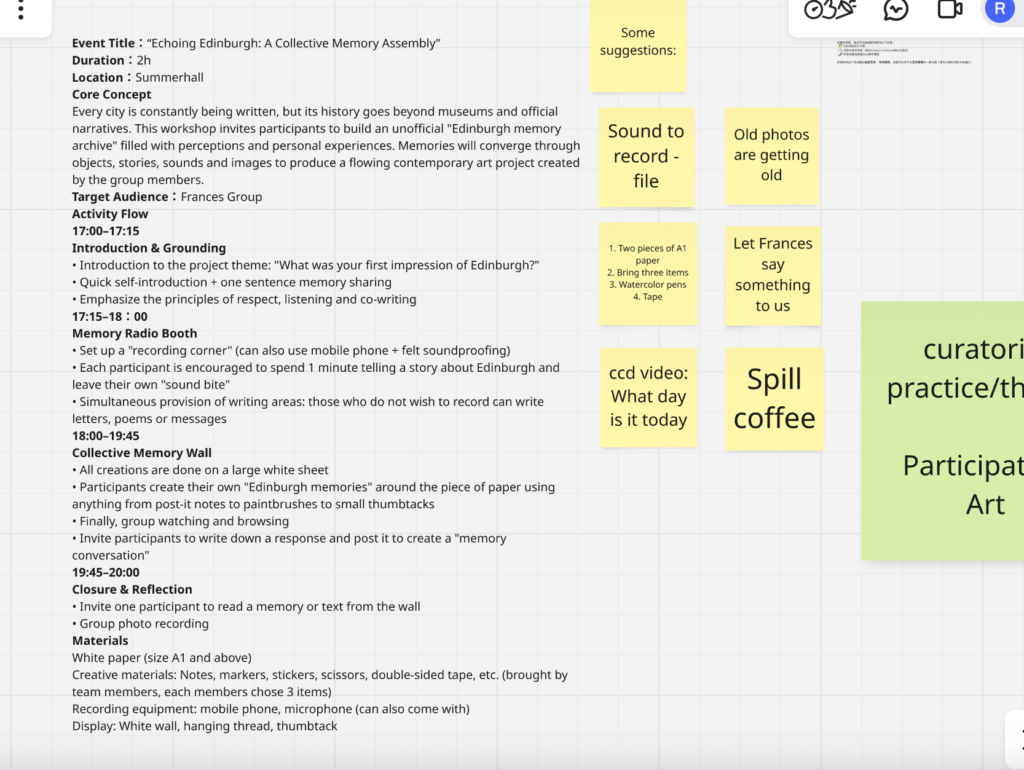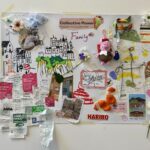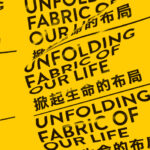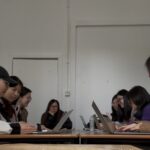During this week’s plan meeting, we each shared our thoughts on the target audience. Initially, I set the exhibition location in a hutong in Beijing, and thus temporarily positioned the target audience as tourists. However, through further in-depth thinking and literature research, I realized that such a positioning might be too superficial and fail to fully reflect the profound significance and value of this exhibition.
This exhibition addresses the topic of intangible cultural heritage, which is a subject that requires significant public attention in the contemporary context, especially among the younger generation. They are at the core of social production and cultural consumption, possessing strong learning abilities and the power to disseminate information. Therefore, I hope to target the younger group as the primary audience.
Summer Hall
This week in the Summer Hall, we reflected on the main content of the workshop. As we are about to complete our academic courses at the University of Edinburgh, Lingqiu Xiao proposed to hold a workshop about our memories of Edinburgh. We meticulously designed the project content on Miro. Each of us will assume the role of an artist, which will help us generate more creative thoughts. We will co-create a collage to represent our collective memories through our joint work.

Reference
Wang, Yiling. “Investigation and Study on the Influencing Factors of Intangible Cultural Heritage Paper-cutting Inheritance.” Journal of Innovation and Development (2023): n. pag.





fdavis
31 March 2025 — 08:42
You are continuing to use your blog consistently and since the last round of feedback have written posts reflecting on visits to exhibitions at Inverleith House and in Glasgow as well as your work as a collective. You have also posted a number of posts documenting the development of your individual curatorial project – on your theme, site, and artists. Your artist selection has resolved issues raised previously around the contemporary relevance of your exhibition.
Whilst your recent blog posts do show evidence of the ongoing development of your own project, there is very limited engagement with curatorial methods and theories relevant to your project in your blog at present. The learning outcomes for the course (and which are the criteria against which your work is assessed) specifically require that you research and engage with curatorial theories and methods, locating your own practice in relation to the expanded field of curatorial theory and practice and this is something to address before submission.
For example, what other projects have looked at intersections between contemporary artistic practice and traditional crafts? Reflecting on similar projects and the curatorial approaches of these would help to locate your approach in relation to the wider field of contemporary curatorial practice. Remember too that you need to evidence engagement with curatorial theory. The Resource List has lots of curatorial texts and journals.
See also the Special Issue of the Journal of Contemporary Chinese Art on Reinventing Traditions in Chinese Art (Vol. 6, Issues 2 and 3). This doesn’t focus on curating specifically but is may have articles relevant to the thematic focus of your exhibition. https://www.intellectbooks.com/journal-of-contemporary-chinese-art
In your blog post on exhibition site, you first discuss the Nan Chi Zi art museum, reflecting on the traditional architecture of the space and the way in which contemporary exhibitions are displayed in this space. This feels really relevant to your own project but you don’t make these connections explicit.. When you go on to discuss your site selection – which visually appears to be a similarly traditional space – you focus only on the proximity to tourist attractions as an advantage of the space. This feels like a missed opportunity.